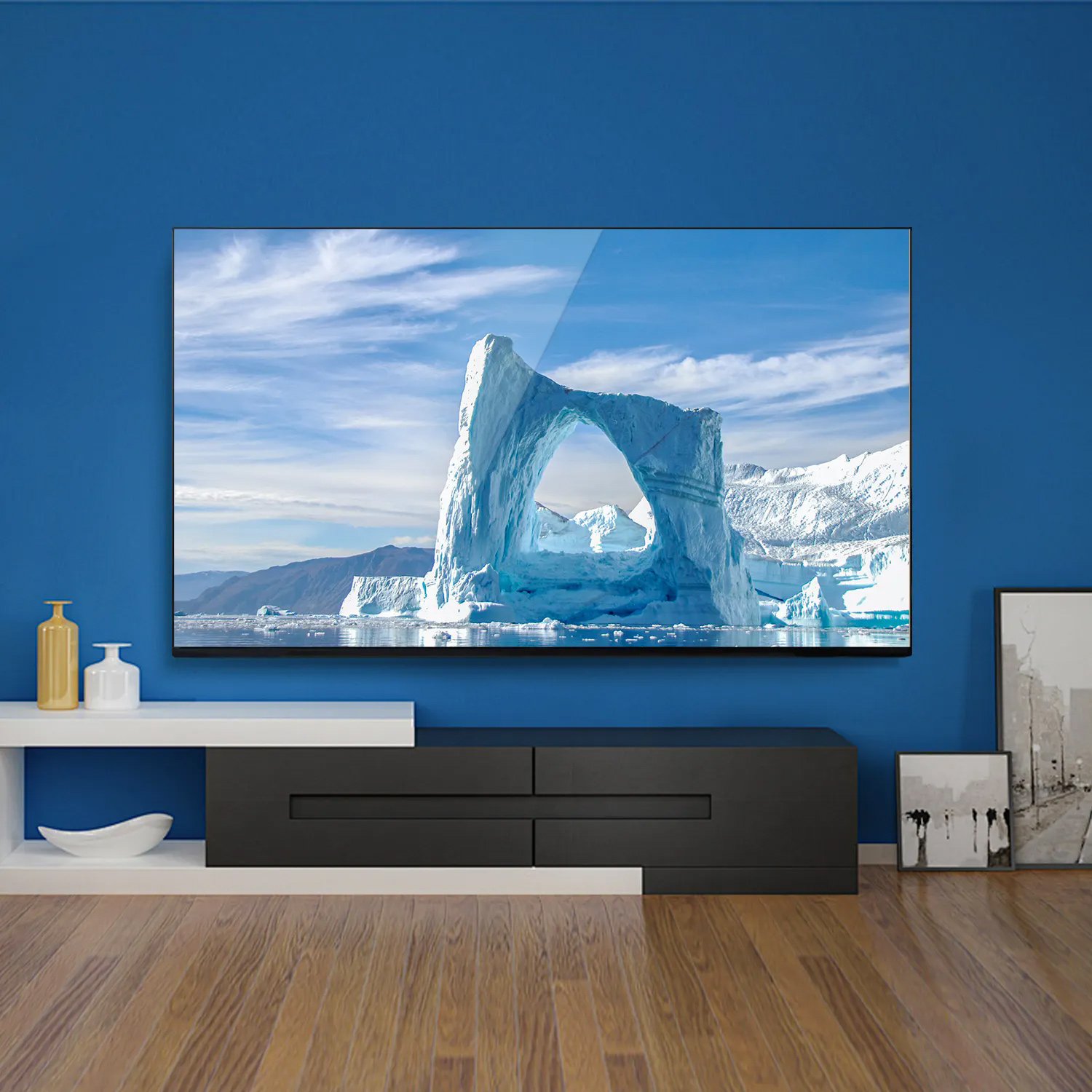As a fusion of traditional televisions and internet technology, Smart TVs have fundamentally transformed the interaction paradigms and technical boundaries of home entertainment. This article analyzes their core technical principles and innovative trends from four dimensions: hardware, software, connectivity, and human-machine interaction.

1. Hardware Architecture: From Single-Purpose Decoding to Heterogeneous Computing
The core hardware of Smart TVs has evolved from traditional single-function video decoding chips to highly integrated System-on-Chip (SoC) architectures. Taking mainstream solutions from manufacturers like MediaTek and Samsung as examples, a typical SoC includes the following modules:
- CPU: Multi-core ARM architecture processors (e.g., Cortex-A73) handle operating system operations and multitasking.
- GPU: Graphics processors supporting OpenGL ES 3.2 render dynamic UIs and gaming visuals.
- NPU (Neural Processing Unit): Dedicated to AI tasks, accelerating image super-resolution (e.g., 4K-to-8K upscaling) and voice recognition.
- Video Decoding Engine: Supports HEVC/H.265, AV1, and other codecs, decoding up to 8K and120Hz video streams.
Display panel technologies have also advanced:
- OLED: Self-emissive pixels using organic light-emitting diodes achieve a contrast ratio of 1,000,000:1 and response times as low as 0.1ms.
- QLED: Quantum-dot-enhanced LCD panels expand color gamut to 100% DCI-P3 via nanoscale phosphors.
- Mini-LED Backlighting: Achieves precise HDR effects through thousands of micron-level LED zones for localized dimming (e.g., Apple Pro Display XDR).
2. Software Ecosystem: Operating Systems and Cloud Integration
Smart TV operating systems (OS) serve as bridges between hardware and services. Leading platforms include:
- Android TV: Linux-based, supports Google Play Store and Chromecast protocols, offering high openness but significant fragmentation.
- Tizen OS (Samsung): Built on web frameworks, boots in 1 second but operates within a closed ecosystem.
- webOS (LG): Features card-based multitasking, consuming 30% less memory than Android TV.
Cloud-edge collaboration extends functionality:
- CDN Acceleration: Edge nodes cache Netflix and YouTube content, reducing 4K streaming latency below 50ms.
- Virtualization: Premium models (e.g., Sony Bravia XR) enable cloud gaming (e.g., NVIDIA GeForce NOW) via GPU virtualization and low-latency HEVC-over-RTSP encoding.
3. Connectivity: From Wired to Wireless Convergence
Smart TV connectivity has expanded beyond HDMI to multi-protocol integration:
- Wireless Technologies:
- Wi-Fi 6E: Utilizes the 6GHz band with MU-MIMO, delivering 9.6Gbps throughput for stable 8K streaming.
- Bluetooth 5.2: LE Audio synchronizes multi-device sound (e.g., Samsung Q-Symphony).
- Wired Interfaces:
- HDMI 2.1: 48Gbps bandwidth enables dynamic HDR, VRR (Variable Refresh Rate), and ALLM (Auto Low Latency Mode).
- USB 3.2 Gen 2: Supports 10Gbps external storage for high-bitrate local playback.
IoT integration is now critical:
- Matter Protocol: Unifies smart home devices (e.g., Philips Hue lighting) via Thread/Wi-Fi.
- IP Control: HTTP APIs enable deep integration with home automation systems (e.g., Home Assistant).
4. Human-Machine Interaction: AI-Driven Natural Interfaces
Traditional remotes are being replaced by multimodal interfaces:
- Voice Control:
- On-device engines (e.g., Amazon Alexa) use edge-based ASR (Automatic Speech Recognition) models with <300ms response times.
- NLU (Natural Language Understanding) frameworks enable contextual commands (e.g., “Open Netflix and play Stranger Things”).
- Visual Interaction:
- Built-in cameras (e.g., Samsung SmartCam) enable gesture control (e.g., hand hover to mute) and Face ID personalization.
- AI vision: YOLOv5 algorithms detect scenes (e.g., auto-enhancing contrast in sports mode).
Content recommendation systems leverage behavioral analytics:
- Collaborative filtering and Transformer models achieve >75% recommendation accuracy based on viewing history.
5. Challenges and Future Trends
Current technical challenges include:
- Thermal Constraints: High-performance SoCs (e.g., MediaTek Pentonic 2000, 15W TDP) risk throttling in slim designs.
- Privacy Risks: Microphone/camera vulnerabilities require TEE (Trusted Execution Environment) and hardware encryption (e.g., ARM TrustZone).
- Power Consumption: 8K panels average >200W, necessitating DVFS (Dynamic Voltage and Frequency Scaling) and Mini-LED dimming.
Future directions encompass:
- Holographic Displays: Light-field tech (e.g., Looking Glass Factory) enables glasses-free 3D.
- Affective Computing: Emotion-sensing AI tailors content (e.g., suggesting comedies during low moods).
- Decentralized Streaming: Blockchain platforms (e.g., Theta Network) reduce copyright distribution costs.
Conclusion
The evolution of Smart TVs reflects the convergence of computational power, connectivity, and interaction. From heterogeneous SoCs to AI-native OSs, and from passive screens to IoT hubs, each architectural leap redefines the boundaries of “viewing.” As AR/VR and 6G technologies mature, Smart TVs may evolve into central gateways for immersive digital experiences.








